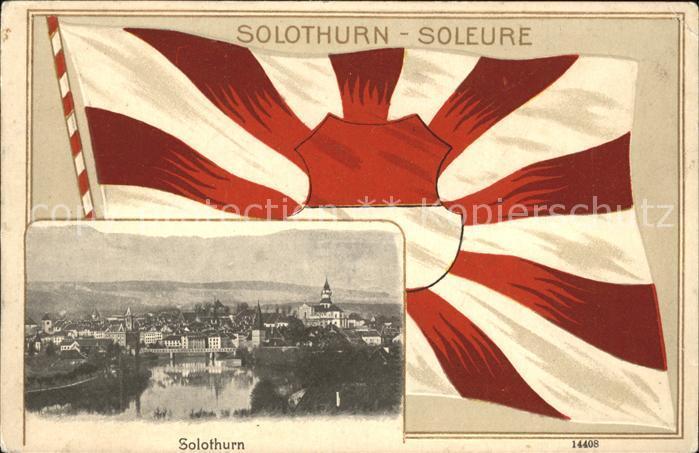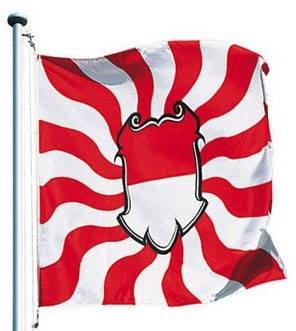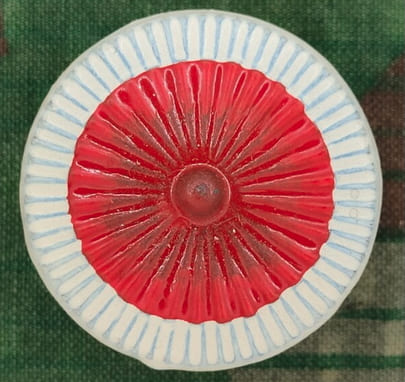![[Flag of Solothurn]](../images/c/ch-so.gif) image by António Martins
image by António Martins

Last modified: 2025-08-16 by martin karner
Keywords: switzerland | solothurn | german |
Links: FOTW homepage |
search |
disclaimer and copyright |
write us |
mirrors
Description of the Flag
Per fess gules and argent.
Divided horizontally into equal parts red over white.
T.F. Mills, 19 October 1997
Symbolism of the flag
There are at least two theories on the origin of Solothurn's colours.
One holds that they came from the vexillum of the ancient Roman
Legion of Thebes which was massacred in Helvetia in 302. St. Ursus,
the patron saint of Solothurn, was allegedly an officer of the
legion. Less likely, Solothurn adopted the colours of Austria (as
did Schwyz and Unterwalden).
T.F. Mills, 19 October 1997
The name "Solothurn" comes from Celtic "Solodurum". The ending "-durum" means gate.
History of the Flag
According to legend, Ursus was an early Christian who proselytised
the Solothurn region. He was persecuted and eventually decapitated
on the Aare River bridge, and his body thrown into the river (see history of Swiss flag). But
the body swam ashore, picked up its head, and walked to its burial
place. Thus did Ursus become the patron saint of the city. The seal
of the city has always depicted St. Ursus, and as early as 1394 the seal
contained a red and white background identical to the current flag,
so these are regarded as St. Ursus' colours. Solothurn became an
independent state in the empire in 1447, and was admitted to the
Swiss Confederation on the same day as Fribourg in 1481. This was
done over the objections of Obwalden, whose flag at the time was
identical.
T.F. Mills, 19 October 1997
Colour Flag
![[Colour Flag SO]](../images/c/ch-so_56.gif) image
by Ole Andersen
image
by Ole Andersen
Rectangular cantonal flag, as shown in Kannik (1956) [So-called
colour flag (Farbenfahne in German)].
Ole Andersen, 4 August 2002
See also: STATE COLOURS in Dictionary of Vexillology
Flaggen, Knatterfahnen and Livery Colours |
![[Knatterfahnen]](../images/c/ch-so_kf.gif)
|
Flaggen are vertically hoisted from a crossbar in the manner of gonfanon, in ratio of about 2:9, with a swallowtail that indents about 2 units. The chief, or hoist (square part) usually incorporates the design from the coat of arms – not from the flag. The fly part is always divided lengthwise, usually in a bicolour, triband or tricolour pattern (except Schwyz which is monocolour, and Glarus which has four stripes of unequal width). The colours chosen for the fly end are usually the main colours of the coat of arms, but the choice is not always straight forward.
Knatterfahnen are similar to Flaggen, but hoisted from the long side and have no swallow tail. They normally show the national, cantonal or communal flag in their chiefs.
Željko Heimer, 16 July 2000
See also: HANGING FLAG, VERTICALLY HOISTED FLAG, LIVERY COLOURS in Dictionary of Vexillology

 images located by Martin Karner
images located by Martin KarnerAt the beginning of the 20th century, flamed flags were still in use, with the white cross replaced by
a (baroque) shield in the centre of the flag. These decorative flags had been used until WWII and then
somewhat forgotten in preference of the current cantonal flags. [Today they are being
produced again, see right image]
Pascal Gross, 30 June 2002
See also:
logo.jpg) image located by Martin Karner (8 May 2024)
image located by Martin Karner (8 May 2024) image located by Martin Karner
image located by Martin KarnerCockade for the cantonal troops' headgear (regulation from 1898, size: ca. 35 mm, reverse side).
Martin Karner, 14 March 2025
See also: Cockades (Swiss Army)